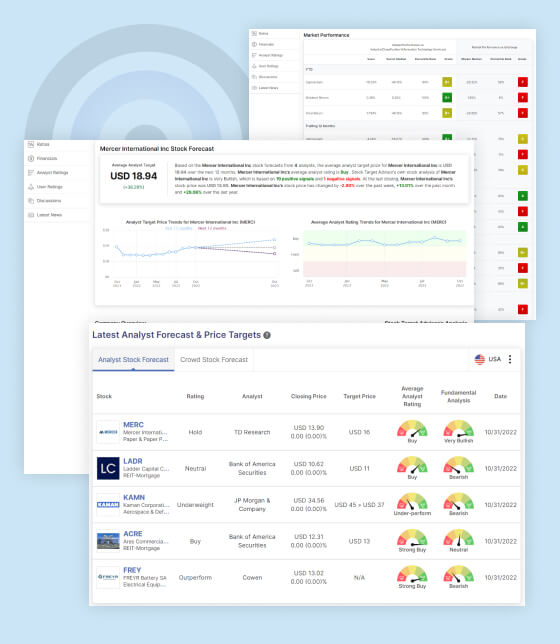Investments For Your Retirement
Photo by Andrea Piacquadio from Pexels
Imagine a retirement where financial worries are a thing of the past, and your golden years are truly golden. This dream can become your reality with the power of stock investments. Moving from the bustling world of Wall Street to the serene ease of Easy Street in retirement might seem like a journey reserved for the financial elite, but it’s an accessible path for many. In this article, we’ll unveil how the strategic inclusion of stocks in your retirement plan can not only safeguard your future but also potentially offer you a lifestyle upgrade.
Understanding the Basics of Stock Investments
Stocks are among the most common forms of financial investments. They represent shares of ownership in a company. When you buy stocks, you’re essentially buying a piece of that company, making you a shareholder entitled to a portion of the company’s earnings and assets.
Types of Stocks
Stocks can be broadly categorized based on company size, industry sector, and growth potential, among other factors. Here are some more nuanced categories:
- Growth Stocks: These are shares in companies that are expected to grow at an above-average rate compared to the market. They typically reinvest their earnings into the business and rarely pay dividends.
- Value Stocks: These are shares of companies that appear to be undervalued in the market. Value stocks are characterized by lower price-to-earnings ratios and may offer dividends.
- Dividend (or Income) Stocks: These stocks regularly distribute a portion of the company’s earnings to shareholders as dividends. They can provide a steady income, which is appealing to retirees.
- Blue-Chip Stocks: Shares of large, well-established, and financially stable companies with a long history of reliable performance.
- Small-Cap, Mid-Cap, and Large-Cap Stocks: This categorization is based on the company’s market capitalization (market cap), which is the total market value of a company’s outstanding shares. Small-cap companies are smaller, potentially offering higher growth potential but with more risk. Large-cap companies are typically more stable but might offer slower growth.
The Role of Stocks in Retirement Planning
Investing in stocks plays a crucial role in retirement planning, offering both growth potential and income generation that can help ensure a comfortable retirement.
Outpacing Inflation
One of the primary challenges in retirement planning is ensuring that your savings maintain their purchasing power over time. Inflation can erode the real value of money, making it essential to seek investments that offer returns exceeding the inflation rate.
Historically, stocks have provided higher average returns compared to traditional savings accounts or fixed-income investments like bonds, making them an effective hedge against inflation.
Generating Growth and Income
- Growth through Capital Appreciation: Growth stocks, in particular, can significantly increase in value over time. Investing in these stocks within an Individual Retirement Account (IRA) can be particularly advantageous, as the potential high returns can grow tax-deferred, maximizing the compounding effect.
- Income through Dividends: Dividend-paying stocks provide a regular income stream without the need to sell shares. This feature is particularly valuable for retirees who need a steady cash flow to cover living expenses.
Leveraging Compounding Returns
The power of compounding returns is a key advantage of stock investments in retirement planning. Reinvesting dividends and capital gains from selling appreciated stocks can significantly accelerate the growth of your retirement savings. Over time, the effect of compounding can turn even modest regular investments into substantial sums, providing a more secure financial foundation for retirement.
Strategic Stock Investment Approaches for Retirement

When it comes to preparing for retirement with stocks, strategic planning is essential. Here’s how you can leverage stock investments to build a retirement portfolio that aligns with your financial goals and risk tolerance.
Diversify Your Portfolio
Diversification is key, but when focusing on stocks, it’s about more than just spreading investments across various sectors. Consider diversifying across different types of stocks—growth, value, dividend-paying, and international stocks—to balance potential risks and rewards. This approach can help mitigate sector-specific downturns and capitalize on growth opportunities in different areas of the market.
Sector Allocation and Timing
Sector allocation involves strategically choosing which sectors of the economy to invest in based on current market conditions, future outlook, and your personal risk tolerance. As market conditions change, periodically reviewing and adjusting your sector exposure can help you capitalize on growth opportunities and reduce risk. Timing these adjustments is more about long-term trends and less about short-term market timing, which can be risky and less predictable.
Monitoring and Rebalancing
Even a well-diversified stock portfolio can drift from its target allocation due to market movements. Regular monitoring and rebalancing are essential to maintain your desired level of risk and to ensure that your portfolio aligns with your retirement goals. This may involve selling some stocks that have increased in value and buying others to maintain your strategic asset allocation.
Understanding Market Cycles
Market volatility is a normal part of investing in stocks. Prices fluctuate daily based on a myriad of factors, including economic indicators, corporate earnings, geopolitical events, and market sentiment. Over the long term, however, the stock market has historically trended upward, despite short-term volatility. Understanding this can help you maintain perspective and avoid making impulsive decisions during market downturns.
Managing Emotional Investing
One of the most common mistakes when investing in stocks is letting your emotions take over. Making buy or sell decisions based on market euphoria or panic can be detrimental to your retirement savings. To combat this, establish a disciplined investment plan and stick to it. This might include setting specific criteria for buying or selling stocks, such as rebalancing your portfolio at set intervals or when your asset allocation deviates significantly from your target.
Wrapping Up
In the journey from Wall Street to Easy Street, stock investments emerge as a powerful ally, transforming retirement dreams into reality. Embracing a strategic approach to stocks—balancing growth with income, navigating market cycles with wisdom, and managing risks with foresight—can unlock a future of financial serenity. As you chart this course, remember that the key to a golden retirement lies not just in the investments you make, but in the vision, discipline, and persistence with which you pursue them.





























